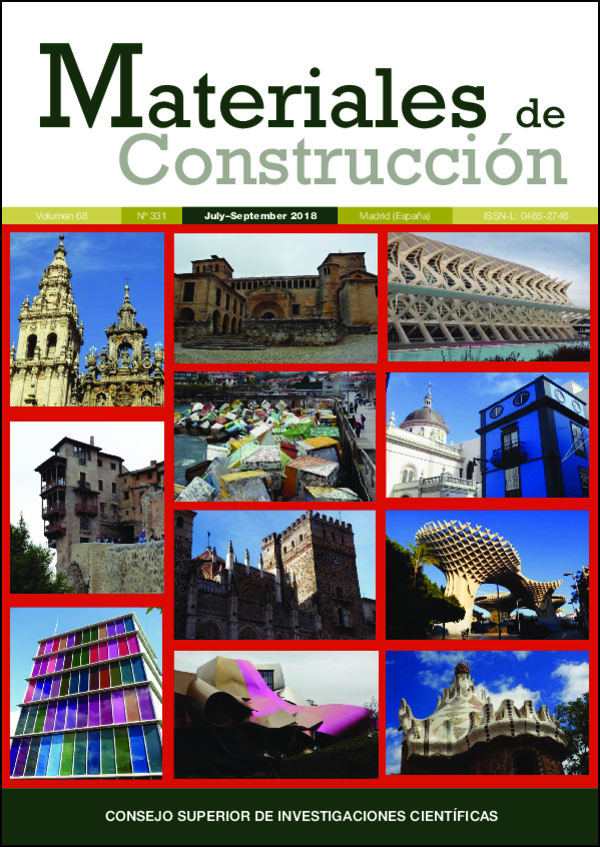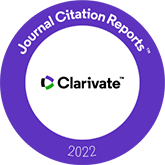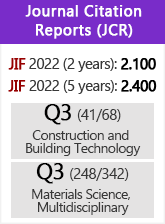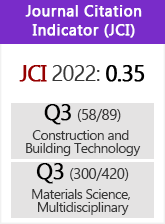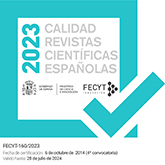Utilización de áridos procedentes de residuos de construcción y demolición en morteros activados alcalinamente
DOI:
https://doi.org/10.3989/mc.2018.07417Palabras clave:
Morteros, Morteros activados alcalinamente, Residuos de Construcción y demolición (C&DW), Prestaciones mecánicas, Resistencia a fuego, RetracciónResumen
Este estudio explora la viabilidad tecnológica del uso de residuos de construcción y demolición (C & DW) como árido reciclado en morteros activados alcalinamente, determinando el comportamiento mecánico y microestructural. Asimismo, se determinó la retracción sufrida por morteros de escoria activados alcalinamente (AAS) y la resistencia al fuego de morteros de cenizas volantes activadas alcalinamente (AAFA) con incorporación de estos áridos reciclado. Se utilizó arena silícea normalizada y dos tipos de áridos de hormigón reciclado en diferentes proporciones. Los resultados mostraron que la demanda de agua era más alta en los morteros preparados con árido reciclado. También se observó que el reemplazo parcial con un 20% (80/20) del árido convencional con el material reciclado producía morteros con alta resistencia mecánica, aunque la porosidad total también aumentaba. El reemplazo total, sin embargo, dio peor rendimiento mecánico. Los estudios de resistencia al fuego y retracción realizados, indicaron que los morteros de cementos activados alcalinamente preparados con áridos reciclados en proporción 80/20 presentan un rendimiento aceptable.
Descargas
Citas
Pacheco-Torgal, F., Labrincha, L. (2013). Review: The future of construction materials research and the seventh UN Millennium Development Goal: A few insights. Construc. Build. Mat., 40: 729–737. https://doi.org/10.1016/j.conbuildmat.2012.11.007
Puertas, F., Santos, R., Alonso, M.M., del Río, M. (2015). Alkali-activated cement mortars containing recycled clay-based construction and demolition waste. Ceram. Silikaty, 59: 202–210.
Müller, H., Haist, M., Vogel, M. (2014). Assessment of the sustainability potential of concrete and concrete structures considering their environmental impact, performance and lifetime. Construc. Build. Mat., 67: 321–337. https://doi.org/10.1016/j.conbuildmat.2014.01.039
European Commision, Towards a circular economy, Available: https://ec.europa.eu/commission/priorities/jobs-growth-and-investment/towards-circular-economy_en. [Last access: july 2017].
Palomo, A., Krivenko, P., García-Lodeiro, I., Kavalerova, E., Maltseva, O., Fernández-Jimenez, A. (2014). A review on alkaline activation: new analytical perspectives. Mater. Construcc., 64, [315] e022. https://doi.org/10.3989/mc.2014.00314
Provis, J., Palomo, A., Shi, C. (2015). Advances in understanding alkali-activated materials. Cem. Concr. Res. 78: 110–125. https://doi.org/10.1016/j.cemconres.2015.04.013
Villaquirán-Caicedo, M., Mejía de Gutierrez, R., Gallego, N. (2017). A Novel MK-based Geopolymer Composite Activated with Rice Husk Ash and KOH: Performance at High Temperature. Mater. Construcc. 67, [326] e117. https://doi.org/10.3989/mc.2017.02316
Fernández-Jimenez, A., Puertas, F. (197). Alkali-activated slag cements: Kinetic studies. Cem. Concr. Res. 27: 359–368. https://doi.org/10.1016/S0008-8846(97)00040-9
Puertas, F., Palacios, M., Manzano, H., Dolado, J., Rico, A., Rodríguez, J. (2011). A model for the C-A-S-H gel formed in alkali-activated slag cements, J. Europ. Cer. Soc., 31: 2043–2056. https://doi.org/10.1016/j.jeurceramsoc.2011.04.036
Martín Morales, M. (2013). El residuo de construcción y demolición (RCD) como árido en la elaboración de prefabricados no estructurales. PhD Thesis. Univ. Granada (In spanish)
Vegas, I., Iba-ez, J., Lisbona, A., Sáez de Cortazar, A., Frías, M. (2011). Pre-normative research on the use of mixed recycled aggregates in unbound road sections. Construc. Build. Mat. 25., [5], 2674–2682. https://doi.org/10.1016/j.conbuildmat.2010.12.018
Fernández-Ledesma, E., Jiménez, J., Ayuso, J., Corinaldesi, V., Iglesias-Godino, F. (2016). A proposal for the maximum use of recycled concrete sand in masonry mortar design. Mater. Construcc., 66, [321] e075. https://doi.org/10.3989/mc.2016.08414
Shi, X., Collins, F., Zhao, X., Whang, Q. (2012). Mechanical properties and microstructure analysis of fly ash geopolymeric recycled concrete. J. Haz. Mater, 237–238, 20–29. https://doi.org/10.1016/j.jhazmat.2012.07.070 PMid:22954605
Behera, M., Bhattacharyya, S., Minocha, A., Deoliya, R., Maiti, S. (2014) Recycled aggregate from C&D waste & its use in concrete. A breakthrough towards sustainability in construction sector. A review, Construc. Build. Mat. 68: 501–516. https://doi.org/10.1016/j.conbuildmat.2014.07.003
Puertas, F., Barba, A., Gazulla, M., Gómez, M., Palacios, M., Martínez-Ramirez, S. (2006). Ceramic wastes as raw materials in portland cement clinker fabrication.·characterization and alkalineactivation. Mater. Construcc., 56: [281], 73–84.
Allahverdi, A., Kani, E. (2009). Construction waste as raw materials for geopolymer binders. Int. J. Civ. Engin. 7: [3], 154–160.
Reig, L., Tashima, M., Borrachero, M.V., Monzó, J., Cheeseman, C., Payá, J. (2013). Properties and microstructure of alkali-activated red clay brick waste. Construc. Build. Mat, 43: 98–106. https://doi.org/10.1016/j.conbuildmat.2013.01.031
Robayo-Salazar, R.A., Rivera, J., Mejía de Gutiérrez, R. (2017). Alkali-activated building materials made with recycled construction and demolition wastes. Construc. Build. Mat. 149: 130–138. https://doi.org/10.1016/j.conbuildmat.2017.05.122
Rakhimova, N., Rakhimov, R. (2015). Alkali-activated cements and mortars based on blast furnace slag and red clay brick waste. Mat. Desig. 85: 324–331. https://doi.org/10.1016/j.matdes.2015.06.182
Shaikh, F. (2016) Mechanical and durability properties of fly ash geopolymer concrete containing recycled coarse aggregates, Int.l J. Sust. Built Envir. 5: 277–287.
Parthiban, K., Mohan, K.S.R. (2017). Influence of recycled concrete aggregates on the engineering and durability properties of alkali activated slag concrete, Construc. Build. Mat. 133: 65–72. https://doi.org/10.1016/j.conbuildmat.2016.12.050
UNE-EN 196-2:2014. Method of testing cement - Part 2: Chemical analysis of cement, 2014.
UNE-EN 80243, 1999. Cement test metyhods. Chemical analysis. Determination of free calcium oxyde: ethylenglycol method.
Hooton, R., Emery, J. (1983). Glass content determination and strength development predictions for vitrified blast furnace slag. 1st Int. Conf. on the fly ash, silica fume, slag and other mineral by products in concrete, Montebello, Quebec, Canada.
Arjuman, P., Silbee, M., Roy, D. (1997). Quantitative determination of the crystalline and amorphous phases in low calcium fly ash, 10th International Congress on the Chemistry of Cement, Gotheburg.
UNE 80122:1991, Methods of testing cement. Determination of fineness (Blaine method).
UNE-EN-1744-1, 1999. Tests for chemical properties of aggregates. part 1: chemical analysis.
UNE-80-217:91, 1991. Methods of testing cement. Determination of chloride, carbon dioxide and alkali content.
Valverde-Espinosa, I. (1993). Caracterización de aridos para hormigón en la depresión de Granada, PhD Thesis. Univ. Granada (In spanish)
Valverde-Espinosa, I. (2014). Los áridos carbonatados de Granada en relación con algunas prescripciones de la EH-91, Technical report (in spanish).
EN-1097-6:2001/A1:2006, Tests for mechanical and physical properties of aggregates Part 6: Determination of particle density and water absorption.
UNE-EN 933-1: 2012, Tests for geometrical properties of aggregates - Part 1: Determination of particle size distribution - Sieving method.
UNE-EN196-1, 2011 Methods of testing cements. Determination of strength.
Puertas, F., Varga, C., Alonso, M.M. (2014). Rheology of alkali-activated slag pastes. Effect of the nature and concentration of the activating solution, Cem. Concr. Comp.,53, 279–288. https://doi.org/10.1016/j.cemconcomp.2014.07.012
Palacios, M., Banfill, P., Puertas, F. (2008). Rheology and setting of alkali-activated slag pastes and mortars: Effect of organic admixture, ACI Mater. J, 105: 140–148.
Alonso, M.M., Gismera, S., Blanco, M.T., Lanzón, M., Puertas, F. (2017). Alkali-activated mortars: Workability and rheological behaviour. Construc. Build. Mat. 145: 576–587. https://doi.org/10.1016/j.conbuildmat.2017.04.020
UNE-EN-1015-3: 2000. Methods of test for mortar for masonry. Part 3: Determination of consistence of fresh mortar (by flow table).
Silva, R., De Brito, J., Dhir. R.K. (2016). Performance of cementitious renderings and masonry mortars containing recycled aggregates from construction and demolition wastes. Construc. Build. Mat. 105: [15] 400–415. https://doi.org/10.1016/j.conbuildmat.2015.12.171
Corinaldesi, V., Moriconi, G. (2009). Behaviour of cementitious mortars containing different kinds of recycled aggregate. Construc. Build. Mat. 23: 289– 94. https://doi.org/10.1016/j.conbuildmat.2007.12.006
Yildrim, S., Meyer, C., Herfellner, S. (2015). Effects of internal curing on the strength, drying shrinkage and freeze–thaw resistance of concrete containing recycled concrete aggregates. Construc. Build. Mat. 91: 288–296. https://doi.org/10.1016/j.conbuildmat.2015.05.045
Angulo-Ramírez, D., Mejía de Gutiérrez, R., Puertas, F. (2017). Alkali-activated Portland blast-furnace slag cement: Mechanical properties and hydration. Construc. Build. Mat.140: 119–128. https://doi.org/10.1016/j.conbuildmat.2017.02.092
Fernández-Jiménez, A., Palomo, J.G., Puertas, F. (1999). Alkali-activated slag mortars: Mechanical strength behaviour. Cem. Concr. Res. 29, [8]: 1313–1321. https://doi.org/10.1016/S0008-8846(99)00154-4
Puertas, F., Torres-Carrasco, M. (2014). Use of glass waste as an activator in the preparation of alkali-activated slag. Mechanical strength and paste characterisation," Cem. Concr. Res. 57: 95–104. https://doi.org/10.1016/j.cemconres.2013.12.005
Luna-Galiano, Y., Fernández-Pereira, C., Izquierdo, M. (2016). Contributions to the study of porosity in fly ash-based geopolymers. Relationship between degree of reaction, porosity and compressive strength. Mater. Construcc., 66: [324], e098. https://doi.org/10.3989/mc.2016.10215
Palacios, M: Puertas, F. (2007). Effect of shrinkage-reducing admixtures on the properties of alkali-activated slag mortars and pastes. Cem. Concr. Res. 37: 691–702. https://doi.org/10.1016/j.cemconres.2006.11.021
Medjigbodo, S., Bendimerad, A., Roziere, E., Loukili, A. (2018). How do recycled concrete aggregates modify the shrinkage and self-healing properties?. Cem. Concr. Comp. 86: 72–86. https://doi.org/10.1016/j.cemconcomp.2017.11.003
Lee, N., Abate, S., Kim, H-K. (2018). Use of recycled aggregates as internal curing agent for alkali-activated slag system. Construc. Build. Mat. 159: 286–296. https://doi.org/10.1016/j.conbuildmat.2017.10.110
Martin, A., Pastor, J., Palomo, A., Fernández-Jimenez, A. (2015). Mechanical behaviour at high temperature of alkali-activated aluminosilicates (geopolymers), Construc. Build. Mat. 93: 1188–1196. https://doi.org/10.1016/j.conbuildmat.2015.04.044
Pan, Z., Tao, Z., Cao, Y., Wuhrer, R., Murphy, T. (2018). Compressive strength and microstructure of alkali-activated fly ash/slag binders at high temperature. Cem. Concr. Comp. 86: 9–18. https://doi.org/10.1016/j.cemconcomp.2017.09.011
Publicado
Cómo citar
Número
Sección
Licencia
Derechos de autor 2018 Consejo Superior de Investigaciones Científicas (CSIC)

Esta obra está bajo una licencia internacional Creative Commons Atribución 4.0.
© CSIC. Los originales publicados en las ediciones impresa y electrónica de esta Revista son propiedad del Consejo Superior de Investigaciones Científicas, siendo necesario citar la procedencia en cualquier reproducción parcial o total.Salvo indicación contraria, todos los contenidos de la edición electrónica se distribuyen bajo una licencia de uso y distribución “Creative Commons Reconocimiento 4.0 Internacional ” (CC BY 4.0). Puede consultar desde aquí la versión informativa y el texto legal de la licencia. Esta circunstancia ha de hacerse constar expresamente de esta forma cuando sea necesario.
No se autoriza el depósito en repositorios, páginas web personales o similares de cualquier otra versión distinta a la publicada por el editor.
